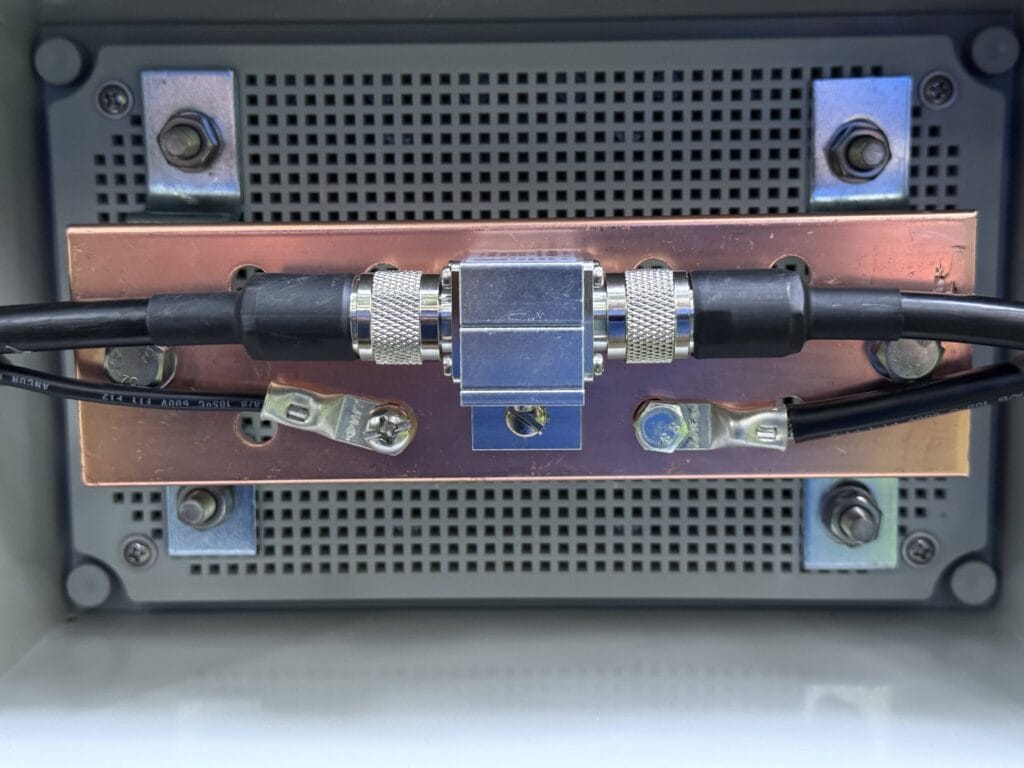The proper grounding of a radio feed is often overlooked on many radio feeds; however, is an essential part of protecting the host and optimizing receive performance. Furthermore, it is required by the National Electric Code.
By properly grounding a radio feed’s antenna system, you prevent the build-up of static electricity around the antenna during a lightning storm, which can help attract lightning to a potential ground. Utilizing a commercial-grade DC-grounded antenna also helps prevent this static build-up. While proper grounding will not prevent a direct lightning strike, it will ensure that the antenna does not become an overly attractive target for lightning. Additionally, this grounding can help prevent equipment damage in the event of nearby lightning strikes that introduce transient voltages into the antenna system.
Note that if you are unfortunate enough to experience a direct lightning strike, the radio equipment will almost certainly be destroyed. However, proper grounding could be the difference between just the radio equipment being destroyed versus the entire building burning down – please consider the safety of your host!
A secondary effect of a properly grounded antenna system can be a slightly reduced noise floor, which can help in hearing weak & distant radio signals. It can also help alleviate intermodulation from strong adjacent radio frequencies in some cases.
A properly grounded antenna system will include grounds to both the antenna mast and the coaxial cable tied into the structure’s primary ground rod. A high quality, commercial-grade coaxial cable lightning arrestor like those made by PolyPhaser should be used. Cheaper options tend to negatively affect reception, and usually do not afford the same level of protection as a commercial-grade product.
It is imperative that these grounds be connected directly to the structure’s primary ground rod, or at least bonded to the primary grounding rod if using a secondary ground rod. The reason for this is you want to provide a literal path of least resistance for all of that energy from a lightning strike to the structure’s ground rod. This bonding should be done using heavy 6 AWG wire or an appropriately sized grounding strap. If using two or more ground rods, ensure they are properly bonded together using more of that heavy 6 AWG wire, or else the resulting difference in potential could cause the lightning to travel through the structure’s electrical system instead!
Speaking of the structure’s electrical system, energy from a lightning strike can also reach your radio equipment via the structure’s 120V AC supply. A high quality surge protector, such as the Tripp Lite Isobar Ultra, can save your equipment in these scenarios. With many lightning strikes resulting in transients being introduced into the electric company’s distribution lines, these devices are well worth it to protect your sensitive radio equipment.
Don’t take shortcuts, and don’t rely on luck. While it is true that many radio feed hosts have no grounding system in place and have not suffered lightning damage, this is purely luck on their part. Remember, all it takes is one lightning strike.
For more information, refer to the following guide:
Antenna System Grounding and Bonding Requirements in the USA

